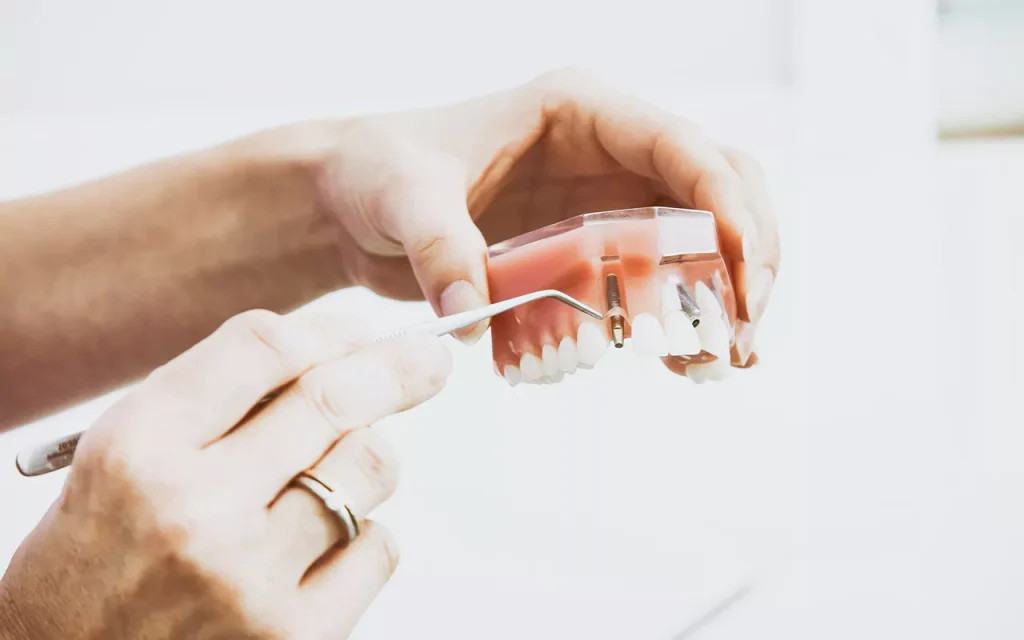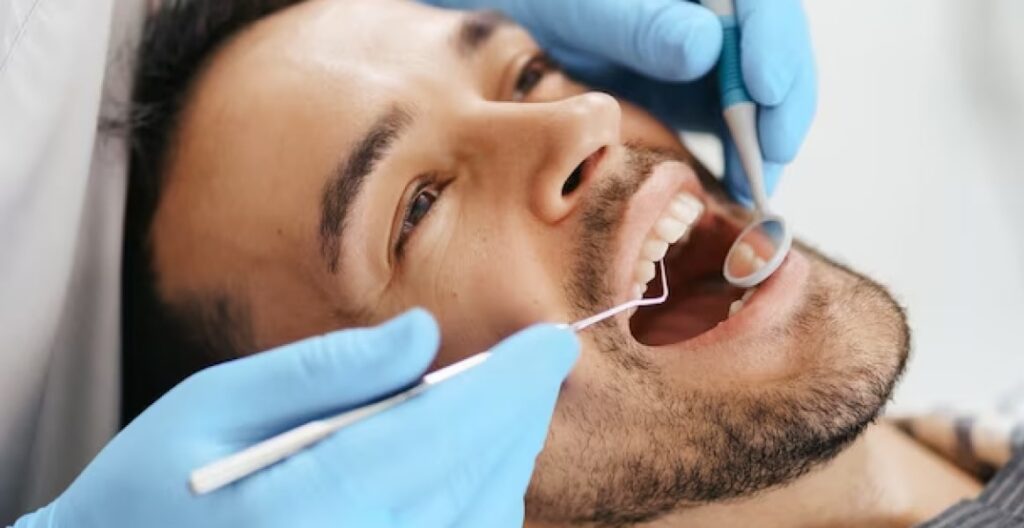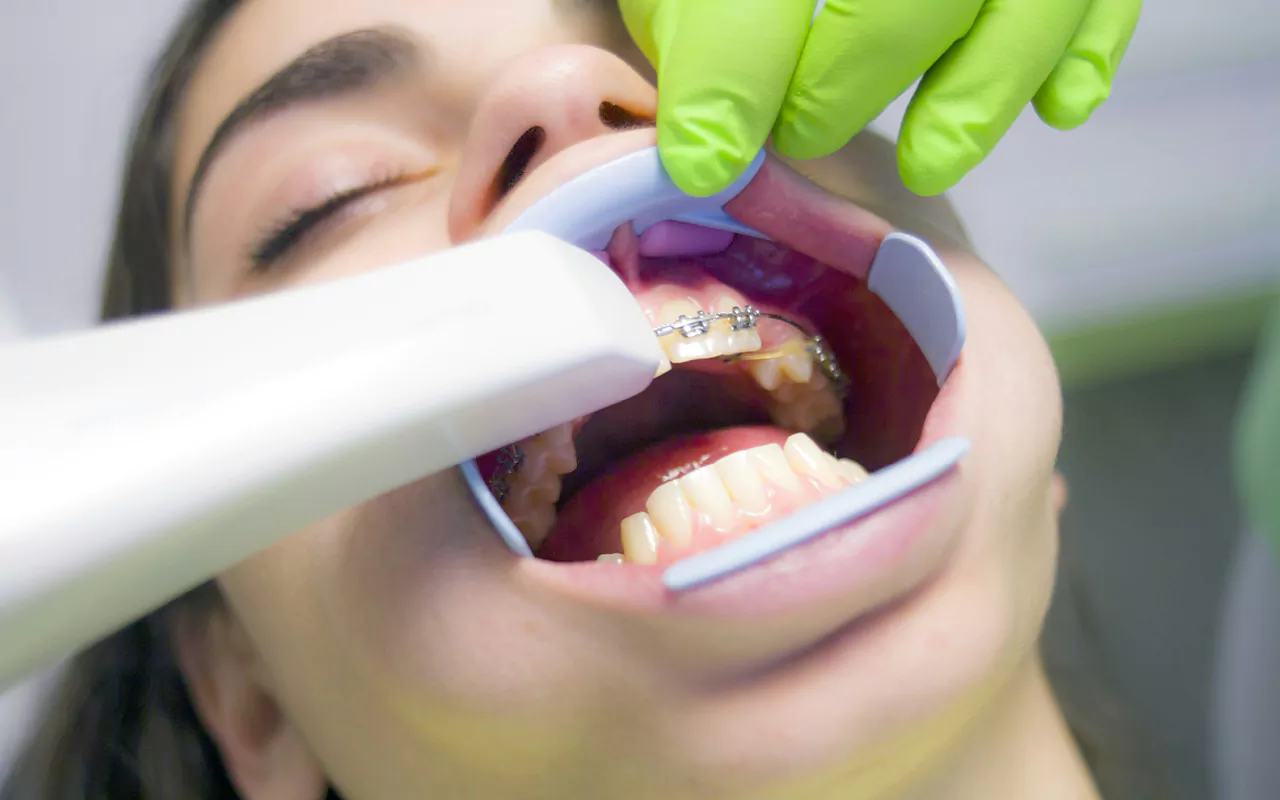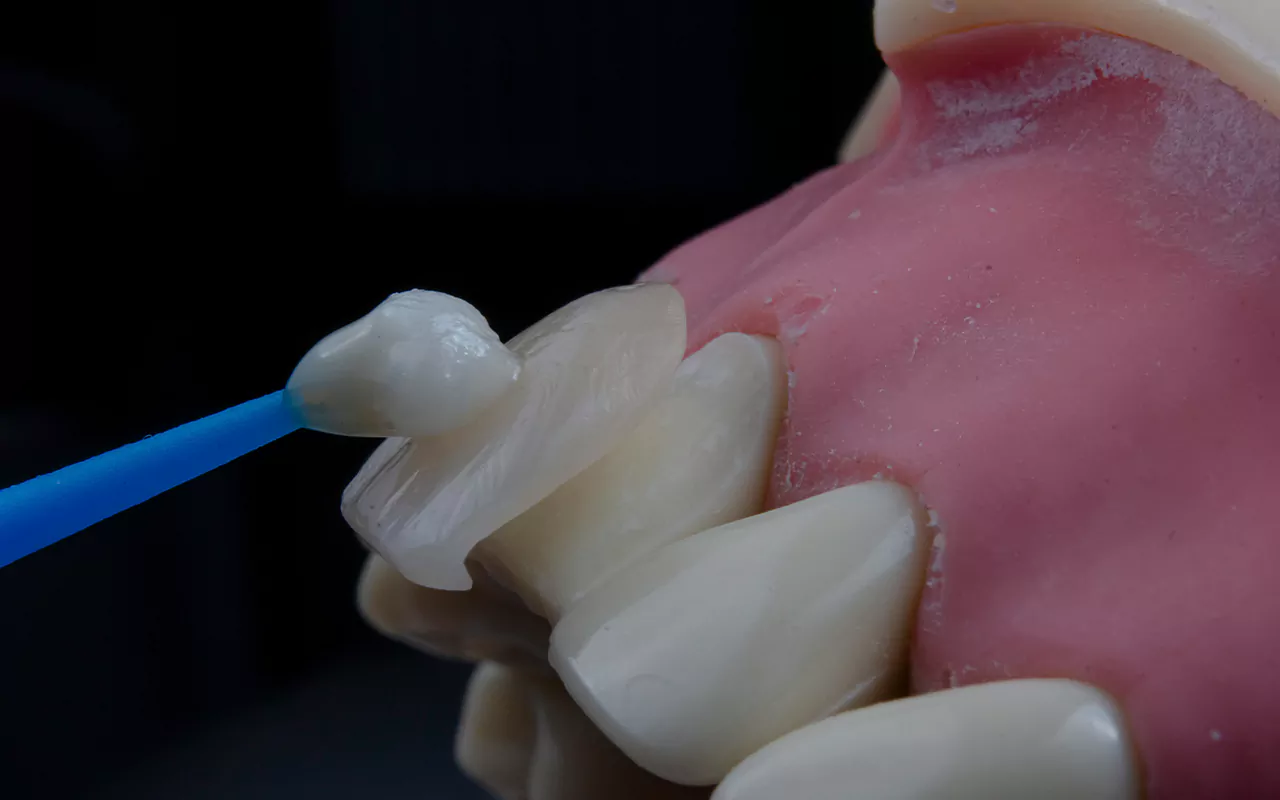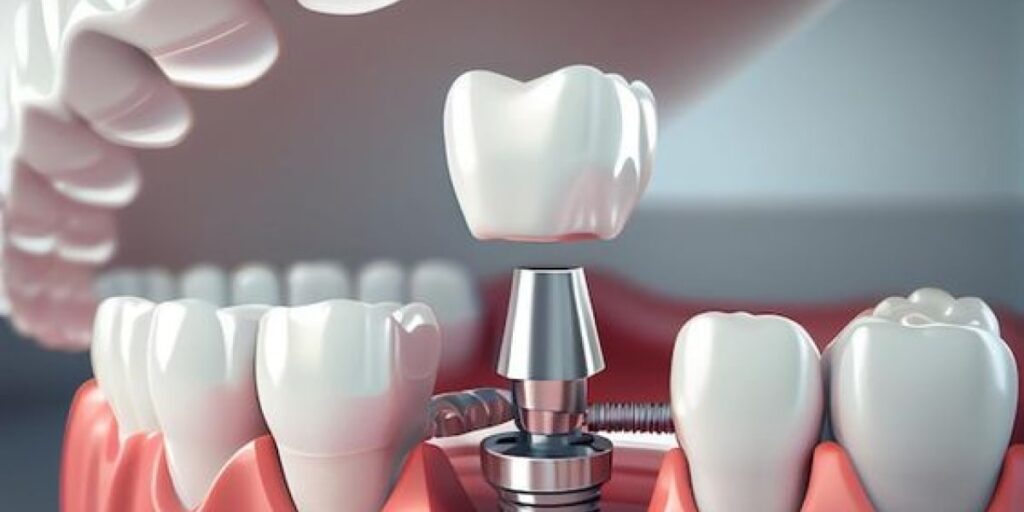What is a Dental Implant?
In general, there are two methods for dental implantation: digital and immediate (one-day), or conventional (traditional). These differ from each other in terms of the surgical procedure, advantages, and disadvantages.
Conventional Implant:
Traditional dental implants are a type of implant that completely mimics the nature of a tooth. The implant has a titanium post that is placed inside the bone that supports the dental crown. With proper care, this type of implant may last for a lifetime.
In this method, the implant is first placed in the patient’s jawbone, and then 2 to 3 months are allowed for it to fuse with the bone, while a dental crown is being fabricated to be supported by the implant. Conventional (traditional) implants are an approved and suitable method whose success requires an adequate amount of jawbone and healthy, disease-free gums.
Advantages of Conventional Implants:
Dental implants prevent jawbone deterioration and damage to other teeth.
The implanted teeth in this method have the same strength as natural teeth in the chewing process.
The implanted teeth in this method mimic natural teeth both in terms of appearance and function.
This method is for replacing teeth that are broken, lost, or unrestorable by other methods.
If cared for (cleaning the implanted teeth, flossing, and periodic check-ups with the dentist), they can last for a lifetime.
The titanium used in this technique is biologically compatible with the body, which allows the implant post to fuse with the jawbone, creating stronger and more stable teeth.
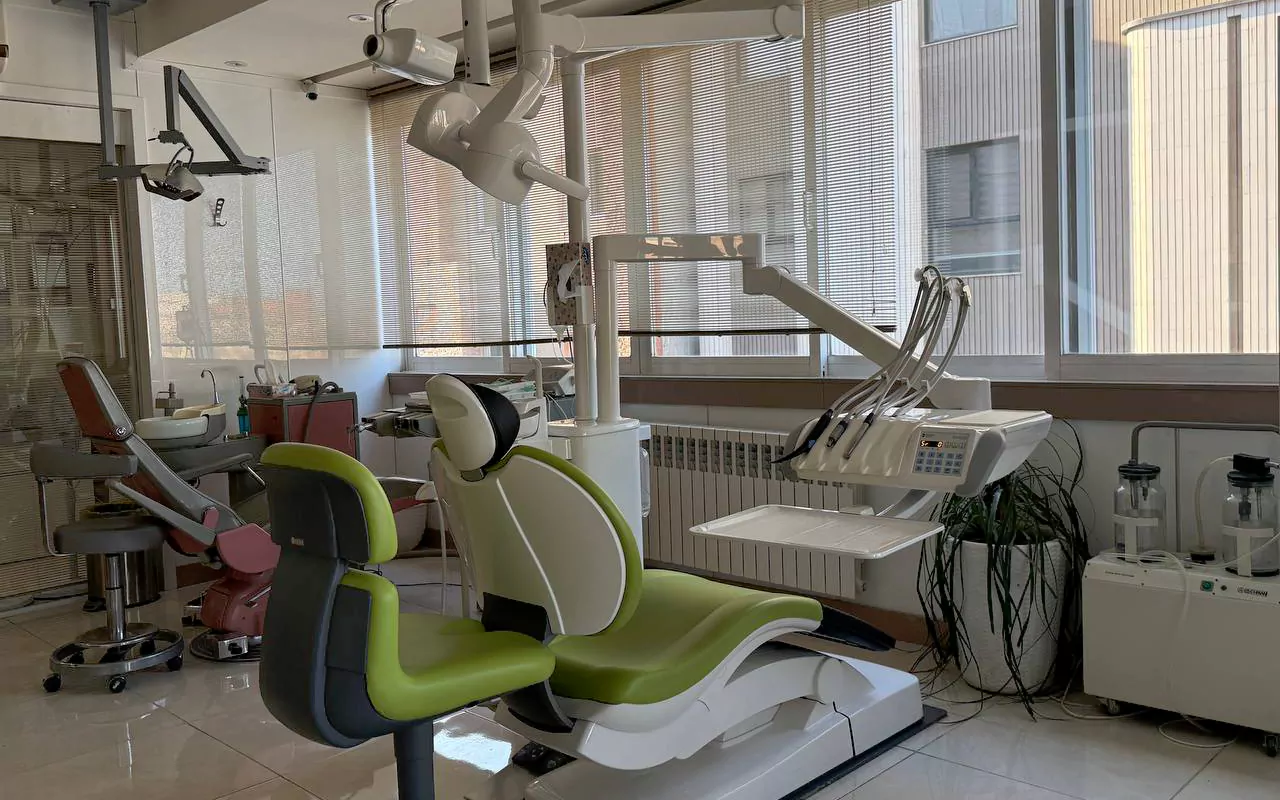
Disadvantages of Conventional Implants:
It often requires regular check-ups and maintenance.
A relatively long recovery time of about a few months is needed for the tooth to fuse and stabilize.
In some cases, you may experience pain during the implantation process.
Digital or Immediate Implant
Digital dental implants are created using 3D technology and are done without surgery. This implant is first designed using a 3D computer model that carefully considers the size and condition of the jawbone, as well as the exact placement of the nerves. It is then placed with a tiny cut, requires no stitches, and causes very little pain.
The digital, or immediate, implant is often used for patients who are scared of surgery or have a low tolerance for pain. Sometimes, the dentist must replace a damaged tooth with an implant immediately after pulling it out. In other cases, this is done to avoid multiple surgeries.
It is important to note that this implant sometimes needs an extra procedure, like a bone graft. To do it successfully, the dentist must check the health and strength of the jawbones and make sure there is enough bone available. They must also pay close attention to the patient’s oral and gum health, their ability to keep their teeth clean after the implant, their general health—especially controlling underlying diseases like diabetes—and making sure the patient quits smoking for two weeks before and after the implant.
Advantages of Digital Implants:
It is a good option for people who have very little width and height in their jawbone.
It allows the dentist to easily save all the implant-related information and data.
It avoids multiple surgeries and is less invasive with few side effects. This results in a faster recovery time.
It offers the patient psychological support and reduces their pain and discomfort during the procedure.
It saves the patient money and time.
The immediate results can be seen right after the damaged tooth is pulled.
This is the best solution when a person has lost all of their teeth.
Digital placement is extremely accurate because of its 3D, computer-based design, and it matches the shape and look of natural teeth better.
The Key Difference Between Traditional and Digital Implants
The immediate implant does not require complicated or painful surgeries. Plus, it can be done on the same day immediately after the tooth is pulled, and the placement steps are completed quickly. In contrast, with traditional implants, surgery and placement happen over multiple appointments, sometimes involving two surgical procedures, stitches, and cutting the gum. The time needed for a traditional implant is at least three months.
Different Methods for Replacing Traditional Impressions:

Digital Oral Scanning (Digital Impressions)
This method replaces the traditional process of using impression paste, which many people find unpleasant. Keeping the mouth open for a long time and tolerating the smell and taste of the paste can cause distress and sometimes gagging in some individuals. In digital impression taking, the mouth is scanned, and the resulting images are analyzed by a computer.
Digital Photography
This imaging technique is one of the advancements in dentistry where a film does not need to be placed inside the mouth; instead, the picture is taken using a digital device. However, this method of photography is not suitable for all cases.
Intraoral Camera
The intraoral camera has a small light that illuminates the inside of the mouth, creating clear, large images of the outer gums and teeth on a screen. By capturing and saving these photos, the dentist has an accurate way to diagnose plaque, decay, gum disease, cracked or broken teeth, detached fillings, and other oral and dental problems.
3D Computer Modeling
Using 3D computer modeling, the position of the jawbone and the nerves at the implant site are clearly identified. This allows the surgeon to create an accurate surgical plan and ensure that no damage occurs to nearby tissues or nerves. It also helps them complete the procedure with a minimal cut and the shortest recovery time. The surgical guide ensures that the surgery is performed with high precision.
CAD/CAM Technology in Digital Implants
The term CAD/CAM is short for Computer-Assisted Design and Computer-Aided Manufacturing. To create a restoration using CAD/CAM, the implant is first digitally scanned, and the images are saved as digital data and sent to a computer. Then, the 3D design software designs a restoration that perfectly fits the implant’s conditions. After the dentist makes any desired changes to the design, the final model is sent to a digital milling machine, which carves and prepares the restoration.



